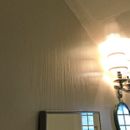Stopping moisture / condensation build up on bathroom walls
75+ year old new Home. Bathroom approx 75 square feet was recently remodeled. There was originally a dropped soffit area above the shower. It was removed and the ceiling was taken up to the ceiling line of the balance of the room. Glass shower doors were added in place of rod and curtain. Walls and ceiling were repainted. A light fan combo was installed and a second fan was added later. Both fans were tested for flow and there is 80+ cfms between the two. Even after the second fan was added there is a tremendous amount of sweating on the 3 interior walls and ceiling. The exterior walls does not sweat. The house is on a crawl. Climate is hot and humid we are south of Atlanta GA. Any advise on what to check or why there is so much sweating?
GBA Detail Library
A collection of one thousand construction details organized by climate and house part










Replies
Merritt,
Condensation happens when warm, humid air contacts a cold surface. The longer you run the exhaust fan, the better the chance that this condensation will evaporate.
Is there any chance that there is an air-conditioning duct behind the drywall? If so, the duct might be cooling the drywall, thereby encouraging condensation.
Yes there is a supply in the wall that enters from the crawl. However it is close to the bathroom door. The wall with the supply is the wall that I posted the picture of. I would understand if it sweated only near it but it sweats on all three interior walls and the ceiling. The paint on the ceiling was bubbling and it’s been scraped and re-mudded.
The most effective systems I've seen exhaust air from a sealed shower, preventing most of the moisture from reaching the rest of the room.
Heat lamps directed towards the walls/ceiling should help.
Taking a shorter, less GPM, colder shower definitely helps.
Merritt,
If there is a supply duct behind the drywall, insulating the duct will help. Otherwise, Jon's advice is good.